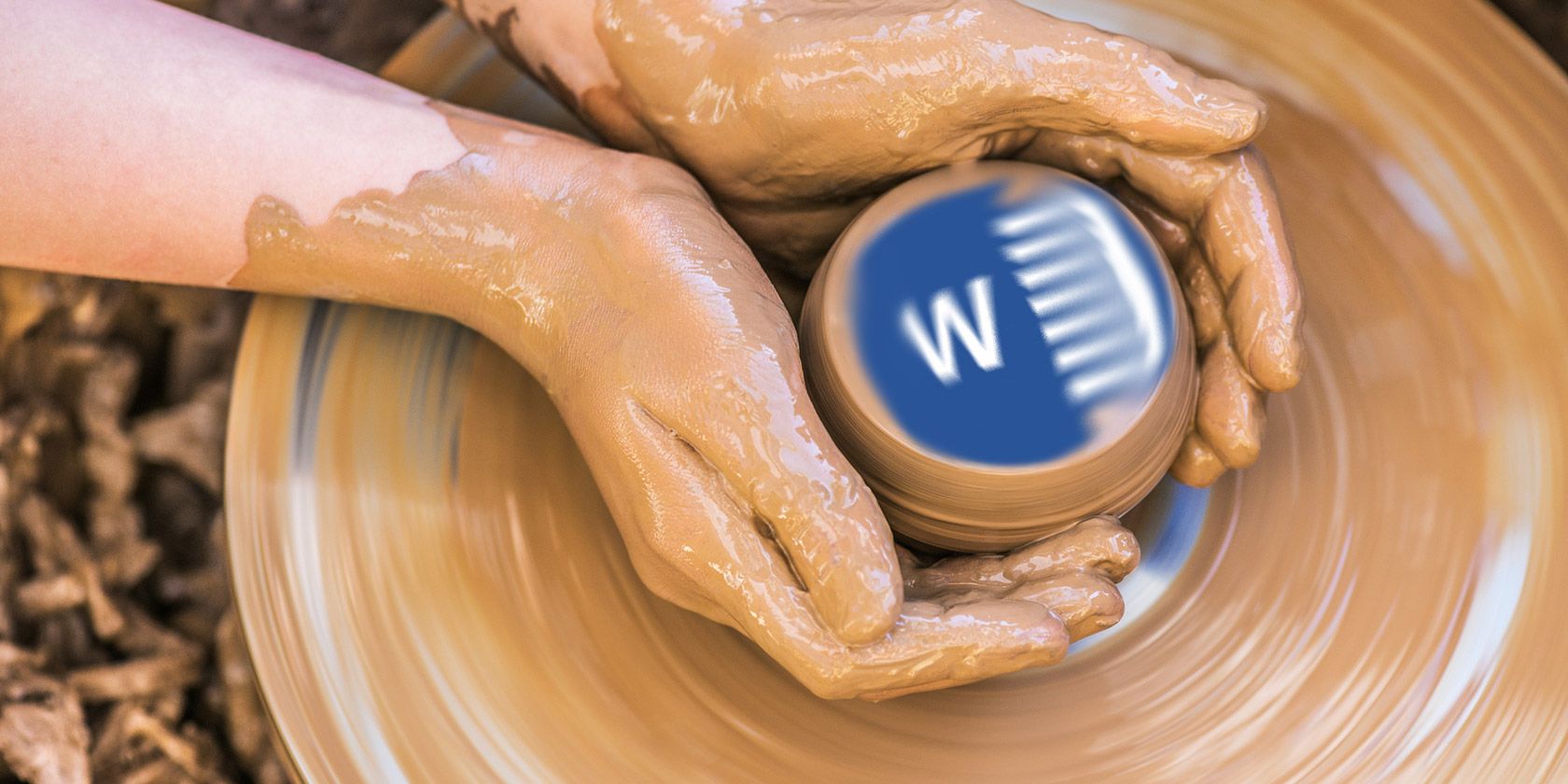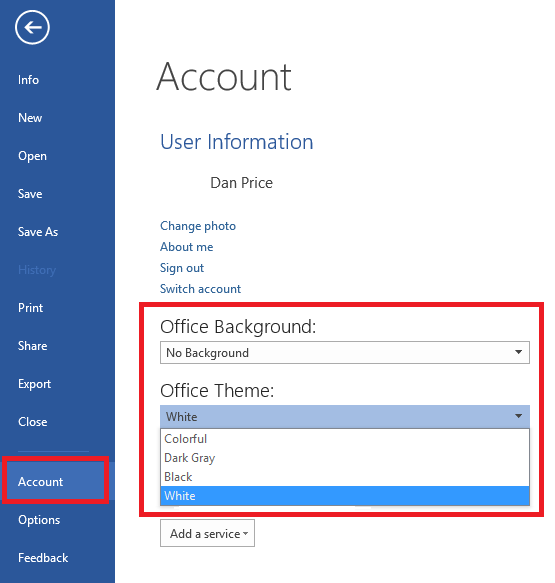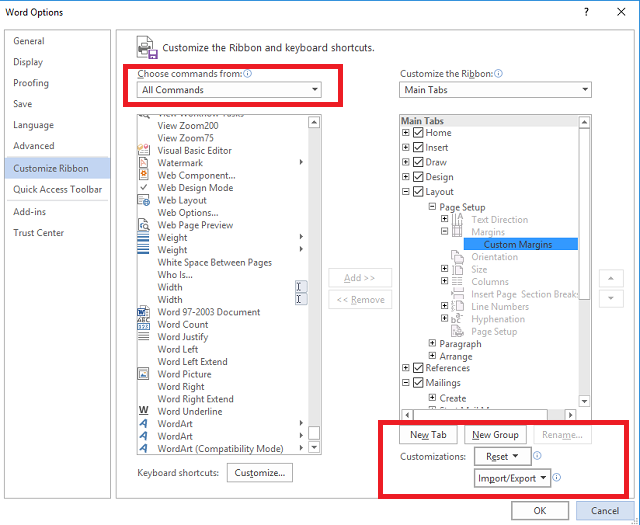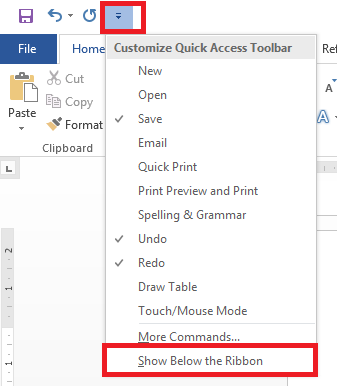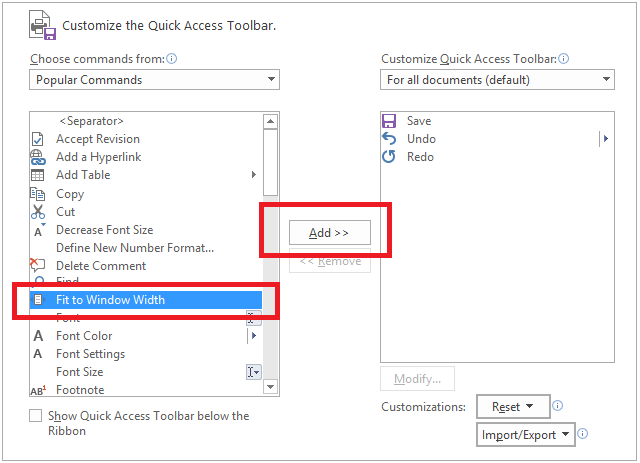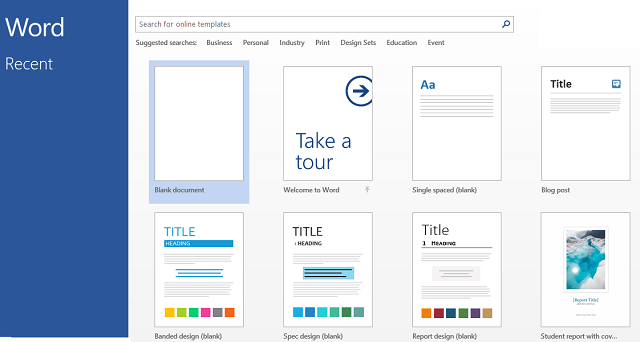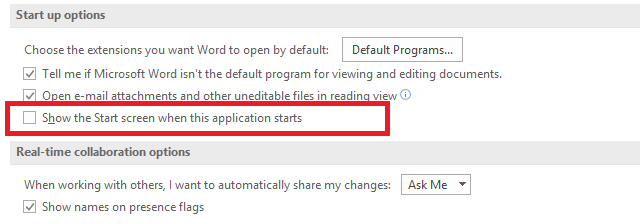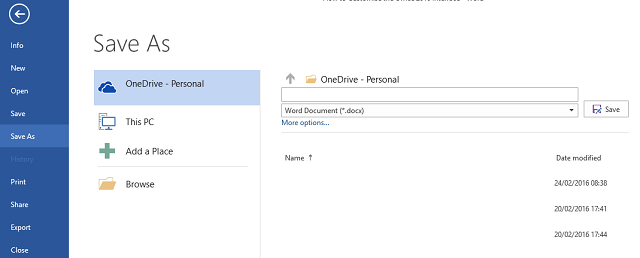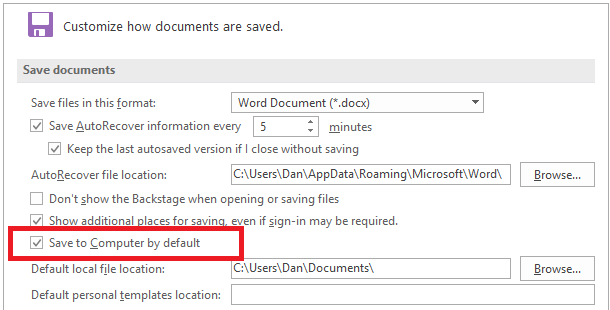Default settings rarely meet the needs of every user. Fortunately, Microsoft has been good about allowing you to adapt its software to your preferences. Microsoft Office 2016, which became available to the public last September, both introduced a host of new customization options and moved some options around.
Let's take a look at some of the best ways to customize the software's interface.
1. Change the Theme
Perhaps the single biggest thing you can do to change the way your suite looks is to alter its theme. It can make the software easier on the eye and make it feel more personal.
Head to File > Account and you'll be presented with two options – "Office Background" and "Office Theme".
The background option will change the way your title bar and tab bar appear. The options are all soft and decorative.
The theme option will change the entire look of Office. There are four to choose from; White, Colorful (uses the default Office color for that particular app), Dark Grey (high-contrast), and Black (for less eye-strain).
By default, the theme you pick will be reflected across all the computers that share the same Office 2016 license and Microsoft Account. You can personalize each computer individually by clicking on File > Options > General > Personalize your copy of Microsoft Office and choose the themes you want.
2. Customize the Ribbon
The ribbon is the horizontal list of options and tools that runs along the top of your Office 2016 screen. It was introduced to the Office package back in 2007, and has since become a ubiquitous part of the product.
The ribbon is the first port of call for almost any task that you want to undertake – but given the sheer number of features available, not everything has been given a spot. The solution is to either edit the existing ribbon or create your own ribbon entry.
Doing so is easy. Head to File > Options > Customize Ribbon and you'll get access to a list of all the groups and entries currently on the ribbon.
You can create your own tab or group by clicking on the corresponding option in the bottom right-hand corner. A tab will add a new clickable entry along the top of the ribbon, whereas a group is a section within a tab. You can see the differences highlighted in red and blue on the image below.
If you are creating your own ribbon entry, make sure you first select All Commands from the drop-down box in the top left-hand corner, otherwise you might struggle to find the tools you want.
3. Customize the Quick Access Toolbar
The Quick Access Toolbar is designed to be an even faster way of accessing your most-used tools and commands. It can be found in the top right-hand corner of an Office 2016 screen.
There are two parts to customizing it; changing its location and changing its shortcuts.
To change its location, click on the drop-down arrow to the right of the shortcut icons. On the menu which pops up, select Show Below the Ribbon (it's the final option on the list).
You have three ways to edit the commands which are displayed on the toolbar:
1. If the command you want to add is already on the ribbon, you can right-click it and choose Add to Quick Access Toolbar. You can also add entire groups to the toolbar; just right-click on the group's name on the ribbon.
2. Head to File > Options > Quick Access Toolbar if you need to add a command that is not on the ribbon, yet. Select the command from the list on the left, and click the Add button in the center of the window.
3. Click on the drop-down arrow on the Quick Access Toolbar and select More Commands. This will take you to the same menu as above.
4. Skip the Start Screen
When you launch one of Office 2016's apps, the first screen you'll see is a list of various templates and recent files. Nine times out of ten you probably click "Blank Document" and carry on. Unless you make frequent use of templates, it's an annoying and time-consuming step.
Thankfully, it's easy to eliminate it and jump straight to a blank document or workbook.
Click on File > Options > Start up options, and uncheck the box next to Show the Start screen when this application starts. You'll need to do this for each individual Office 2016 app – it is not a synchronized universal setting.
5. Save to Your Computer by Default
Make no mistake, OneDrive is a fantastic service. It has a lot of cool features (such as being able to access your computer's files from anywhere in the world), and if you're an Office 365 subscriber you'll be given a mammoth 1 TB of storage for free.
However, it can get a bit annoying when Office 2016 constantly tries to coerce you into using the service by making it the default option on the save menu. This would be particularly annoying for non-Office 365 subscribers, who have their free cloud storage space limited to 5 - 15 GB (depending on when you created your account).
If you want your own computer to be offered as the default save location instead, head to File > Options > Save > Save Documents and click the checkbox next to Save to Computer by default.
How Do You Customize Your Office 2016?
We hope these five pointers will get you on the right track in terms of streamlining your workflow and getting Office visually set up to your liking. However, there are lots more ways to tweak the inner-workings of the apps; in fact, the list of settings within the options menu is near endless.
Have you found a cool time-saving tweak or visual improvement that you can share with your fellow readers? Perhaps you've discovered a cool command which everyone should add to their taskbar?
You can let us know your own thoughts and opinions in the comments box below – we'd love you hear from you!
Image Credit: young potter by BestPhotoStudio via Shutterstock

